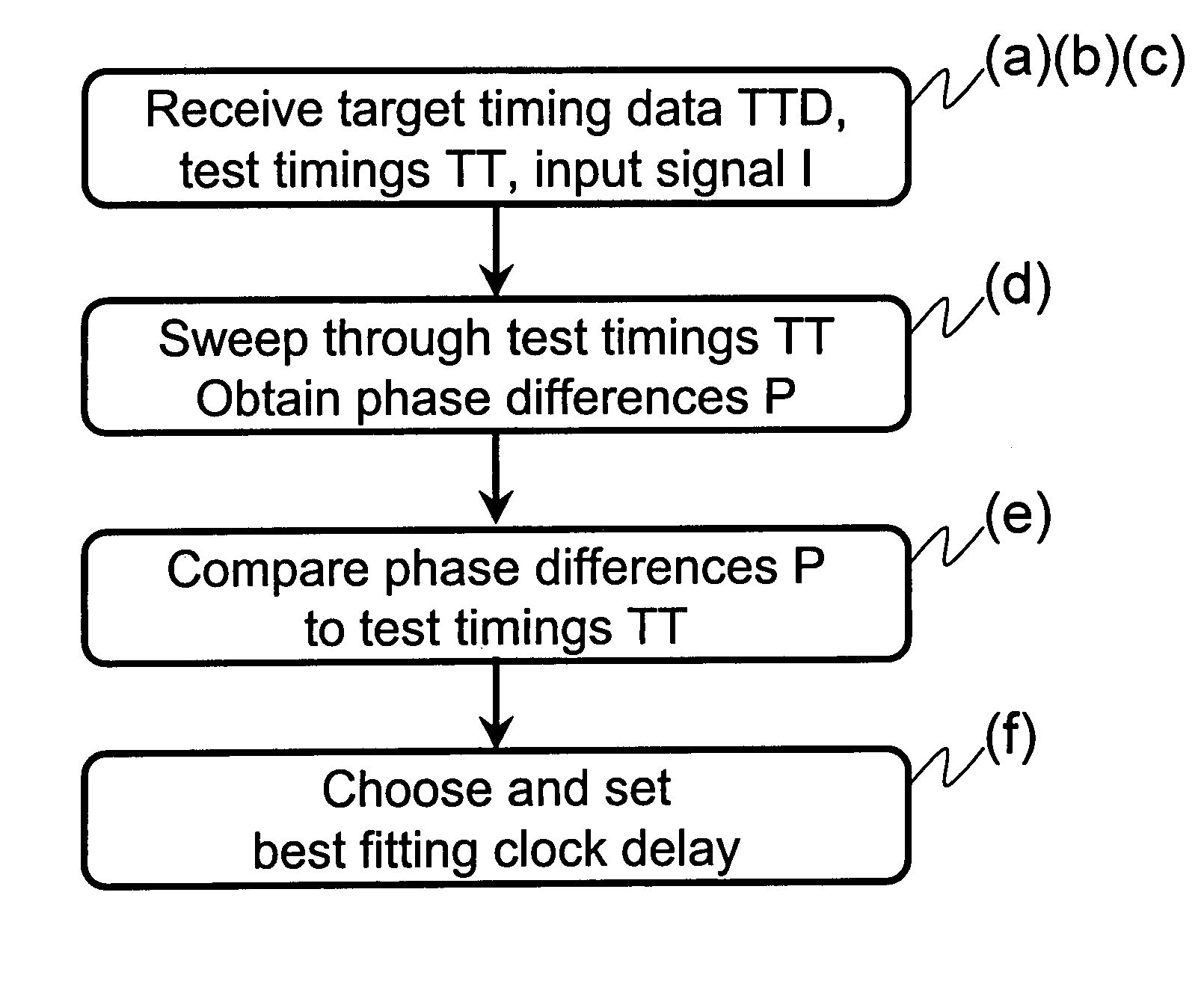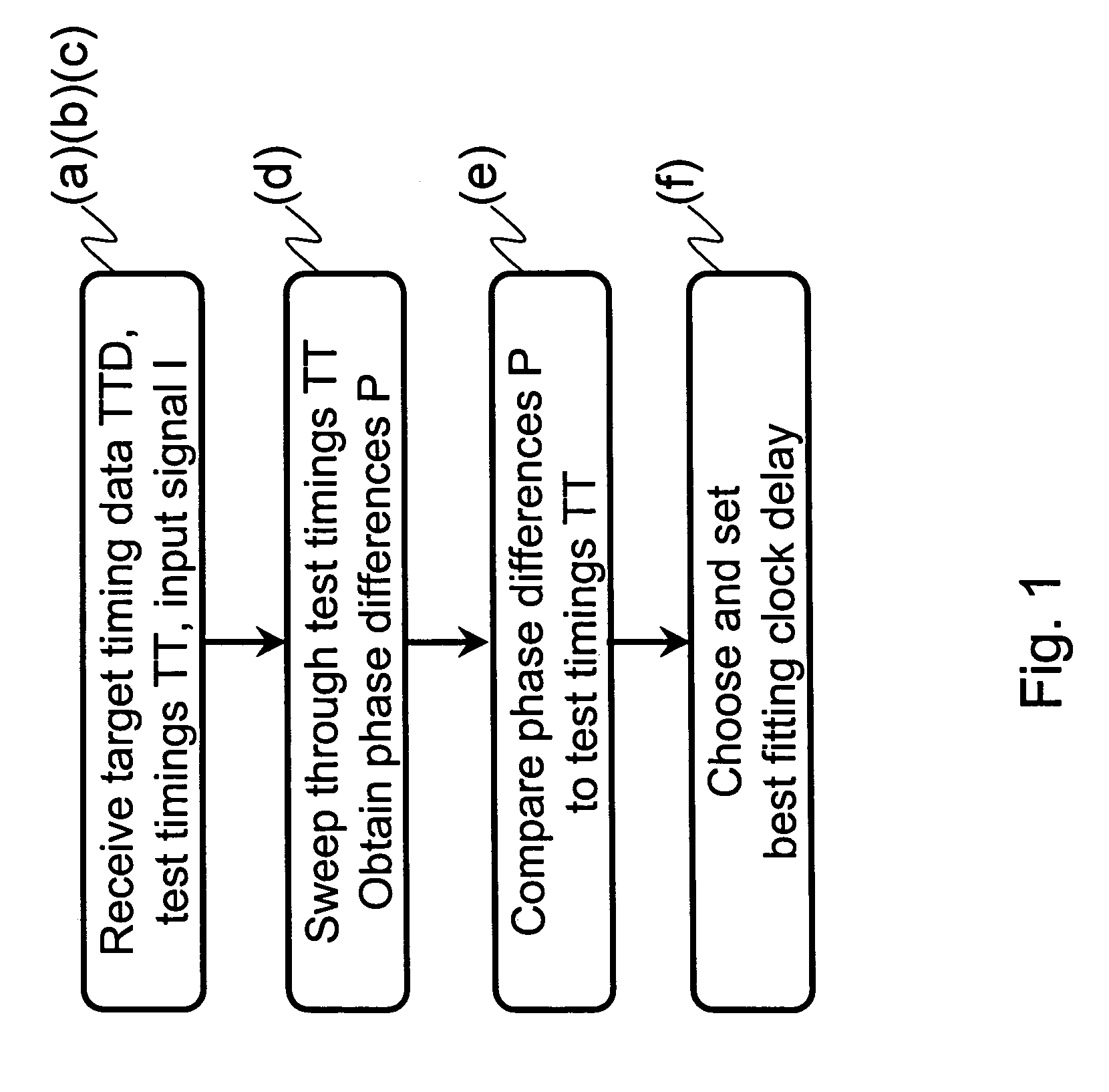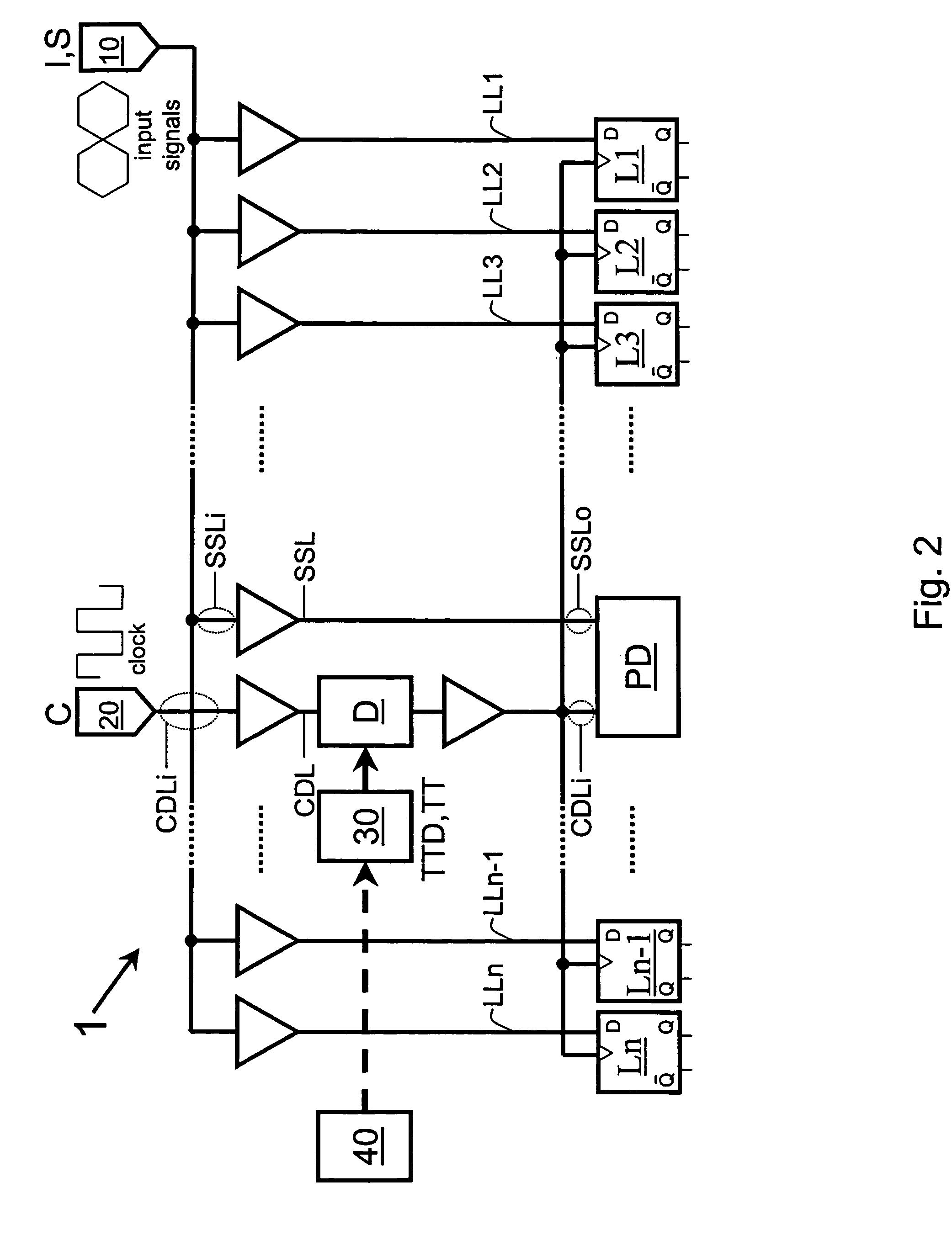Method of optimizing the timing between signals
a timing and signal technology, applied in the direction of noise figure or signal-to-noise ratio measurement, pulse technique, instruments, etc., can solve the problems of prohibiting multiple employment or usage, complex too complex and space-consuming dynamic clock alignment circuits, etc., to achieve stable and reliable, less space-consuming
- Summary
- Abstract
- Description
- Claims
- Application Information
AI Technical Summary
Benefits of technology
Problems solved by technology
Method used
Image
Examples
Embodiment Construction
[0037]In the following elements and structures with similar or equivalent functionalities will be described and denoted by the same reference symbols. Not in each case of their occurrence a detailed description thereof is repeated.
[0038]FIG. 1 is a schematic block diagram describing a first embodiment of the present invention in the sense of a method of optimizing the timing between signals to be latched and a respective latching clock signal.
[0039]A first subprocess of receiving a target timing data TTD, the test timings TT as well as the test input signal I unifies the steps (a), (b), and (c) of the present invention. It follows a step (d) in which a process of sweeping through the test timings and the respective delay test values is realized and in which the respective phase differences between the test input signal I as a sample signal and the respective clock signals C are measured. In a following step (e) the obtained phase differences P are compared to the target timing data ...
PUM
 Login to View More
Login to View More Abstract
Description
Claims
Application Information
 Login to View More
Login to View More - R&D
- Intellectual Property
- Life Sciences
- Materials
- Tech Scout
- Unparalleled Data Quality
- Higher Quality Content
- 60% Fewer Hallucinations
Browse by: Latest US Patents, China's latest patents, Technical Efficacy Thesaurus, Application Domain, Technology Topic, Popular Technical Reports.
© 2025 PatSnap. All rights reserved.Legal|Privacy policy|Modern Slavery Act Transparency Statement|Sitemap|About US| Contact US: help@patsnap.com



